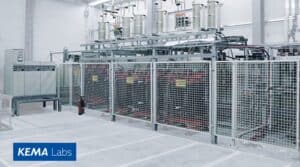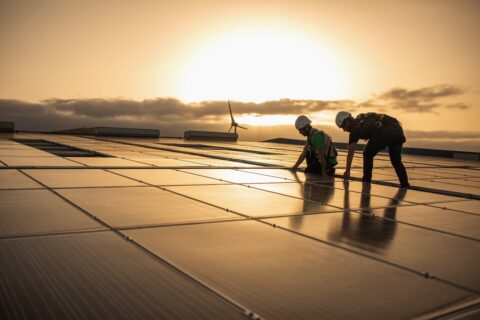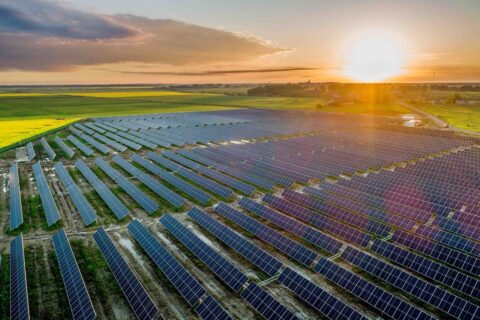It is almost impossible to talk about grid-integrated renewables providing a growing proportion of the energy mix without questions being asked about reliability of power generation and security of supply. In this SustMeme Guest Post, our Climate & Energy Channel Partner CESI explores ways to maximise the cost-effectiveness of incorporating Variable Renewable Energy Sources (VRES) into the power system.
 CESI: To foster sustainable, low-emission development, many countries are establishing ambitious renewable energy targets for their electricity supply. However, because solar and wind tend to be more variable and uncertain than conventional sources, meeting these targets will involve changes to power system planning and operations.
CESI: To foster sustainable, low-emission development, many countries are establishing ambitious renewable energy targets for their electricity supply. However, because solar and wind tend to be more variable and uncertain than conventional sources, meeting these targets will involve changes to power system planning and operations.
In this respect, good grid integration methods maximise the cost-effectiveness of incorporating Variable Renewable Energy Sources (VRES) into the power system, whilst also maintaining, or increasing, system stability and reliability.
The rise of renewable energy and its unpredictable, relatively uncontrollable behaviour is driving development of grid-connected energy storage to enhance stability. Especially in a world increasingly concerned about climate change, the surge in generation from VRES in the last 20 years has required, and will require even more in the future, greater flexibility of the electricity system.
Therefore, energy storage is one of the components that allows for improvement in the flexibility of the system. Electrochemical accumulations, together with Demand Side Management (DSM), represent one of the solutions to meet this need.
Today, we are already witnessing the installation of batteries next to solar and wind farms in renewable energy plants. This is a particularly relevant trend in the economy of ‘hybrid’ companies, which can accumulate energy to provide system services and for balancing.
In fact, according to BNEF’s Energy Storage Outlook 2019, one of the battery functions with greater prospects concerns the injection of energy into the grid during a period of the day other than the one in which it was generated.
Furthermore, the ever-changing evolution of power systems — in combination with the need for flexibility highlighted recently by global lockdown measures — poses new challenges and requirements for the integration of VRES into the grid.
Indeed, in recent years, we have witnessed the development of technical requirements to connect VRES to the transmission system, which is developing remarkably to suit power system needs evolving in light of energy and climate policy targets.
In response to this trend, CESI is in a position to help manufacturers through independent testing and verification of energy storage systems under realistic yet controllable conditions.
The Flex Power Grid Laboratory
Through its Flexible Power Grid Laboratory, based in Arnhem, in The Netherlands, CESI’s Testing, Inspection and Certification Division KEMA Labs offers system-level battery testing, showing the major role played by the inverter in determining the grid performance of energy storage systems.
The Laboratory’s flexible grid connection allows it to mimic real-life grid conditions and vary parameters such as frequency and voltage. Due to the state-of-the-art technology at CESI’s disposal, in the Flex Power Grid Laboratory KEMA Labs’ experts can subject equipment to severe symmetrical and asymmetrical voltage disturbances as well as fundamental frequency excursions.
Given a fully controllable grid-equivalent, these facilities and capabilities permit the behaviour of systems to be verified during both standard operation and extreme scenarios such as frequency variations, over- and under-voltage, grid pollution and more.
Machines and power converters can also be tested to ensure that they possess sufficient low-, high- and zero-voltage fault ride-through, reactive current support and active power control capabilities.
Ultimately, as we advance along the transition path towards the zero-carbon economy of the future, lab testing will become increasingly important for accurately assessing the real-world capabilities of grid-integrated renewables and energy storage solutions. In effect, optimising performance in this way will have a key role to play in companies and governments delivering on their climate promises.
For those interested in learning more about the integration of VRES into the grid, CESI recently held a webinar on the topic, which readers can view free on-demand here.
 Headquartered in Milan and with facilities in Arnhem, Berlin, Prague, Mannheim, Dubai, Rio de Janeiro, Santiago de Chile, Knoxville (USA) and Chalfont (USA), CESI is the world-leading testing, consulting and engineering company in the field of technology and innovation for the electric power sector. At the Flex Power Grid Laboratory in Arnhem, The Netherlands, CESI’s Testing, Inspection and Certification Division KEMA Labs offers system-level battery testing, with flexible grid connection that allows it to mimic real-life grid conditions and vary parameters such as frequency and voltage.
Headquartered in Milan and with facilities in Arnhem, Berlin, Prague, Mannheim, Dubai, Rio de Janeiro, Santiago de Chile, Knoxville (USA) and Chalfont (USA), CESI is the world-leading testing, consulting and engineering company in the field of technology and innovation for the electric power sector. At the Flex Power Grid Laboratory in Arnhem, The Netherlands, CESI’s Testing, Inspection and Certification Division KEMA Labs offers system-level battery testing, with flexible grid connection that allows it to mimic real-life grid conditions and vary parameters such as frequency and voltage.
SUSTMEME: Get the Susty Story Straight!






